Ralph Paine – 3 September, 2016
Like making tents and houses, tagging is life-form, a mode of fertility. But it's a wild, youthful fertility, one giving birth in the open to a coded materiality that by its very nature keeps on seeding and reseeding itself. Tagging consists in an epigenetic experiment of knots and interlacement, arabesques, calligraphy, and industrialized colour. It's a new kind of Baroque inscription that has profound and vital links with ornament and all other varieties of nomadic, abstract line.
EARTH > ALIEN > EARTH’
By the final scene of Andrei Tarkovsky’s sci-fi classic Solaris (1972) we are back on Earth - back at the beautiful country house where the film began. The camera rises slowly above the house, taking in the wintry trees and pond, pulling back and up into the air through soft layers of wispy cloud. As we rise with the camera the frame widens and the house and surrounds are revealed to be floating bonsai-like below us on a vast and fertile blue-green ocean. The scene is anti-gravitational, a sonorous and visual bloc of magical-machinic flight, a sensation so loved by Tarkovsky and one indexing a form of geo-cosmic consciousness (and thus a geo-cosmic dimension of ground) arising during the 60s and early 70s in coincidence, among many phenomena, with the Russian and American space programs. Everywhere there appeared images - photo-images, tele-images, cine-images - of planet Earth as taken from space, an appearance in rapid time creating a planetary-wide collective and self-reflexive awareness that still attends us today… As if we are looking back at ourselves from an imaginary mirror. (1)
Doubtless there are multiple versions of this consciousness. At the time, Buckminster Fuller was busy drawing up blueprints for what earlier he had named “Earth Inc.”, thereby projecting a future-proofed planet via the structures and axiomatics of some capitalist corporation or global research institute. (2) Yet by taking account of the fact that the “departure” scene occurs at the very end of a film constructed around the breakdown of rational, techno-scientific investigation and progress, perhaps for the director this new consciousness was manifesting itself along the lines of an extreme ecological concern. What Tarkovsky seems to confirm with the final scene of Solaris is that it is the Earth which is our sanctuary - our singular and final abode - and not the infinite reaches of an alien, sterile outer-space, and hence it is a sanctuary worth defending. (3)
But Solaris is a film haunted by doubles and simulacra, and so possible second, third sets of thematic-layering begin to emerge from within the same scene. Perhaps here the Earth itself has become an alien being, sweeping the isolated and now doomed sanctuary of the island-house down into its liquid, chaotic essence. Or is the scene a wonderful memory-projection, a hallucination induced by the sentient plasma cloud surrounding the planet Solaris? Isolated on the space station and with no possibility of imminent return to Earth, perhaps the by now deeply alienated psychologist Kelvin has been induced by Solaris - as if in an act of collaborative redemption - to “dream” the liquid dream content of his beautiful childhood home. (4) Yet whatever thematic possibility may emerge here, it remains certain that while flowing progressively in and out of each other, all will flood the scene’s ground via a sequencing of the formula Earth > Alien > Earth’.
This same formula is found operating throughout art’s multivalent oeuvre, wherein a set of given elements of Earth - e.g. my hallucinated inner/outer vision of this cresting wave, these tubes of blue and green pigment, this rag paper, jar of water - are differentiated and contrasted with an alien and now displaced version of themselves; and wherein the resultant pair of contrasts is magically transformed into something sensually/conceptually innovative and unique. These transformations, however, are in no way over-comings or negations of the initial contrast, but rather their expansion to become a new artwork as such: Earth’. And once expanded, fresh oppositions and differences will arise: between the new artwork and its potential alienation as commodity or museum piece; or between the artwork’s now autonomous status and the anonymous flux of life. Doubtless art is always already enmeshed in geo-cosmic relations of contrast, alienation, and difference, but with myriad practices today the enmeshment itself is dramatized, its lines and articulations highlighted in extremis.
PATH AND SITES
Ancient Greek goddess of Earth, Gaea is said to have been born from Chaos, her own alien and radical other. Etymologically, Chaos is the “gaping void” - or according to Ovid, “a mixture of the ‘seeds’ (semina) or potentialities of all kinds of matter”. (5) But Gaea also gave birth; to the Sky who then became her husband, and subsequently to their multiple offspring: seas and mountains, forests and rivers, the Titans, Cyclopes, and Typhon. At Delphi she was worshiped as “the original holder of the oracular shrine”, and her cult spread to become a cult of the Earth “in general”: Gaea, resident in the whole and governing over it. (6) But what did this “whole” signify for the Ancient Greeks? It seems that Gaea’s original nature was that of “the fixed or the firm one”, and thus she was the whole of ground in its concreteness and certainty - something set within a fixed horizon. And because she was required to know what appears and what is done within this horizon one of her main functions was to witness oaths: “Here on Earth, on Gaea, I do swear…” So the whole functioned in a relay with the “here” of the oath, and thus confirms Gaea’s dual conception as both specific site and the multiplicity of site. For doesn’t the site where one is somehow “at” always already imply both site(s) to-be and site(s) of the past? A site contains the promise of elsewhere and meanwhile, eternally as precedent, provisionally as a glimpse of the future. A site, then, consists in a repetition of the ancestral and the unborn in the living, of the macro in the micro, the singular in the multiple, a different coming and going, always in the middle, betwixt and between - between my immediate set of perceptions and my (re-)imagining of an outside and an otherwise to this vibrant immediacy.
To be between is to be on a line, a path - and always imaginatively to be drawn along it. Joining the long and meandering march of the Situationists, Surrealists and flaneurs, Richard Long, Nneka, C McC, the darling Dadaists, Mr D Malone Esq., Jean-Jacques Rousseau (7), Robert Smithson, pilgrims and backpackers, gypsies, planetary aboriginals, global pedestrians and protesters, Matthew Beaumont, Kim Stanley Robinson, Rebecca Solnit, D&G, exiles, émigrés, tramps and wandering (weary?) Utopians, the clockwork Kant, Hamish Fulton and Bob “Walkin’ Ain’t Talkin’” Dylan, refugees, migrants, jet-lagged tourists, shuffling schizophrenics, hitchhikers, boulevardiers, drifters, and strolling crazies of all kinds, the nameless artist decides on going out for a walk, a compelling interlude of step-by-step intuition and intelligence, her muddy footprints dispatching lines of the aesthetico-cultural dimension all the way from archaic recall to a coming yet always attendant uselessness and nowhere, so as to get lost there on ground’s calm and neutral surface, to fuse with the Past-Future event…
If architecture is the first art, paths are the first architecture. In his marvellous book on the peripatetic art Walkscapes, Francesco Careri writes: “The only architecture in the Palaeolithic world was the path, the first anthropic sign capable of imposing an artificial order on the territories of natural chaos”. Thus he suggests we distinguish hominoid space as space conceived via the “erratic”, that is to say, along wandering paths created by the slowly accumulated practico-material experiences of gathering food and finding shelter in an alien world. (8) Given the passage of thousands of years, Careri tells us, this space began to transform by way of a more abstract line. Space now came to be experienced as something composed not only of paths, but also of complex relations between paths and other “signs”: e.g. the sun, the horizon, the stars and moon, cycles of animal movement, certain geographical features and atmospheres. And further, the accruing shared stories about these relational elements and events added a new linguistic dimension. So along with its “quantitative” dimension (extension), now space possessed a “qualitative” dimension (intension). Certain sites became filled with abstract yet emotionally charged meaning; or as Careri puts it, became “full places”. Certain events - e.g. a particularly bountiful hunting season at a specific location - became important features in the emergent mythical wanderings of the various human groups and thus physical space came to be infused with a sacred dimension.
Paths and sites then… Yet now everything divides between preferences for one over the other. Following the last glacial period it is said that the human transformed via two different life-ways, separating between the nomadic and the sedentary, and therefore two very different “ways of thinking about space” began to emerge: famously, Deleuze and Guattari name these “the smooth and the striated”. (9) Doubtless the vast tracts of territory crossed and continuously re-crossed by nomadic peoples will still contain sites (the oasis, campsite, trade fair, well, etc.) but these are considered only relay-points on a continually moving pathway. And in a kind of reversal of nomadic life-ways, the sites of sedentary peoples (state formations) will be composed of paths, but these will be enclosed within and between the permanence of built architecture: the wall, alley, house, granary, temple, palace, etc. - but also roads, bridges, tunnels, aqueducts, and canals.
A brick is the first unit of the state - its Ur-unit - with the potential to become part of a wall, a solidified flow of bricks, division of the territory, built enclosure; or as noted, a road, canal, tunnel… These later reaching out into the surrounding territory, connecting and returning, facilitating newly extracted material flows back to the site which the wall encloses. A brick with a written sign stamped on it further multiplies the unit and its potential flow (régime). It over-codes the wall, or clearly marks the road, canal, tunnel as the constructive/destructive prospect that it is. Detach a marked brick from the road, wall etc. and a new potential arises: de-coding, de-territorialisation. Reattach the sign/brick within a new chain of signification, a new wall or road, a new altar, tower, prison, archive: re-territorialisation. Count the bricks. Re-code them as money-signs. Count the money-signs. Rearrange the walls, roads, prisons, altars. Smash them, turn them to dust, and then make them afresh, but always from the same mould. Mark them afresh, but always with the same sign: de$truction/con$truction, Earth to new Earth.
While earlier we suggested that human architecture (and art) began with the path, now everything must be modified to include the preferences which divide between the aforementioned different kinds of path, and thus between two different kinds of artist/artisan: nomads and brick makers, itinerant smiths and settled agriculturalists, constructors of tents and builders of houses. What are the divided preferences and experiences? First, houses… We are borne into houses, borne from them. A house is a going-out and a coming-in, simultaneously launching pad, landing site, and repose. Postpartum, a child’s earliest venturing forth is from the house, and back to the house, initially in the company of others, increasingly by herself. Spatio-temporal rhythms are learnt to and from the house, on outward and inbound paths, but also while at rest having returned to the house - the movement of daylight in the rooms, the changing interior moods, different sounds and scents, felt activities, enactments, echoes, vibes, the closeness and distance of others, a here-there, gone-here, Fort-Da. As if a circle around us, a house is closed in. But it is also coupled to an outside, opened to the world like a vented circle. A house is pierced - by windows, doors, skylights, pipes, cables, letterboxes, gaps and cracks, aerials, air-conditioning units, security cameras - and thus it is simultaneously private and public, a dispensation of inputs and outputs, plug-ins and disconnects, framings and de-framings. To construct a house is to construct an interlocking series of frames, and so the frame “will be imposed on the other arts, from painting to the cinema.” Relations between wall frames and frescoes, window frames and stained glass, floor frames and mosaics: all have combined to create a “prehistory of the picture”. (10) But the frame also relates everything back to the territory, de-framing it, opening up free pathways of geo-cosmic difference, and this will include the way a window creates lines of flight to the starry night sky, or the way an open doorway always beckons a child out.
And second, tents… Here’s a beautiful passage from Labelle Prussin’s African Nomadic Architecture: “The egg, which so obviously symbolises fertility, is a closed, curved, contained form; it translates into the idea of containment. If the tent and its furnishings, from the square white Mauritanian tents to the domical Somali armature tents, come into being in the course of the marriage ritual, then logic implies that the architecture would indeed echo the same set of aesthetic qualities that coalesce in the symbolism of fertility: containment. For the nomad, the tent is a spherical container, conceptually and in reality, an irreducible unit of space: a portable moving indicator, a moving centre, a container of intimate territoriality which personalises the anonymity of the landscape for the peripatetic nomadic woman”. (11) Clearly, then, if the difference between houses and tents lies with movement, the similarity lies with containment, with the Egg. Inspired by Deleuze and Guattari we conceive the Egg as the Body without Organs (BwO) of both tent and house. The Egg as BwO is their common non-ground, their “milieu of pure intensity, spatium not extension, Zero intensity as principle of production”, that is to say, their abstract, co-condition; the virtual non-dimension of their respective lines, frames, sheltering, and containment… And not that this virtual dimension would lack any differentiation, rather the Egg as BwO of tent and house continually folds, unfolds, refolds the neutral “surface gradients, migrations, zones of proximity” of a pure fertility in-itself. (12)
DIAGRAMMING
Like making tents and houses, tagging is life-form, a mode of fertility. But it’s a wild, youthful fertility, one giving birth in the open to a coded materiality that by its very nature keeps on seeding and reseeding itself. Tagging consists in an epigenetic experiment of knots and interlacement, arabesques, calligraphy, and industrialized colour. It’s a new kind of Baroque inscription that has profound and vital links with ornament and all other varieties of nomadic, abstract line. But it’s also composed of anonymous signatures and cryptic mottos, and so, unlike the bio-codes and feedback signals of many other life-forms, tagging’s coded materiality operates within a linguistic zone as well. To be open to the experience of tagging is thus to be open to the experience of the specific transformations that characterize the relation between human language, signs, subjectivity, and ornament in all its historicity. (13) Yet by eschewing the division of private vs. public, tagging avoids overt ego-attachments and any global over-coding by the present state-capitalist regime, and thereby remains a wonderful life-form of the common. One cannot own a tag as such - they are pure donations, flourishing in view where all are free to pass. (14)
The German art historian Wilhelm Worringer suggests that “it is of the essence of ornament that in its products the artistic volition of a people finds its purest and most unobscured expression”. (15) But don’t we find also in ornament the artistic volition of a people to-come? Everywhere today we encounter sites where tagging is let be. There, it is said, lie the mutant signs of a “coming community”, and thus there too lies the enigma of the neutral surface: ?-Ground. In this sense tagging is a vital example of non-architecture, a dispersed and often anonymous project for imparting smooth space and its nomadic, abstract line back within the built structures, histories, and fixed circuits of contemporary space.
In The Fold: Leibniz and the Baroque, Deleuze proposes a neo-Baroque theory of art well suited to this project; a theory whose own history passes through a zone where “the painting exceeds its frame and is realized in […] sculpture; and sculpture goes beyond itself by being achieved in architecture; and in turn, architecture discovers a frame in the façade, but the frame itself becomes detached from the inside, and establishes relations with the surroundings so as to realize architecture in city planning. From one end of the chain to the other, the painter has become an urban designer. We witness the prodigious development of a continuity in the arts, in breadth or in extension: an interlocking of frames where each is exceeded by a matter that moves through it.” (16) Again, the importance of the frame, but what is decisive here is that although the city is conceived by Deleuze as a continuity of frames, it is at the same time that which “exceeds” this continuity, thus causing the city to exude a Baroque overflow, a surplus. In the case of painting, this surplus or excess is realized through the fact that “a painting always has a model on its outside; it always is a window”.
Within Deleuze’s proposed neo-Baroque context, however, what arrives from the outside is not so much a model as rather “a line with infinite inflection that holds a surface”, a surface which “stops being a window on the world and now becomes an opaque grid of information […] The dyad of the city-information table is opposed to the system of the window-countryside”. (17) Consequently, the non-architectural project will have need of this line arriving from the outside; will require that the project begin again and again with fresh abstraction ensuing from that which exceeds and moves through and between the interlocking frames of the existing space. And in turn, this abstraction will require its own materiality, its own immanent inclusion within organized matter. Inclusive of tagging, then, what more generalized budding form of content/expression might this new materiality take? Or, what is it that is not quite yet part of the manifest n dimensions of ground but nevertheless will have emerged in some way from its virtual co-condition as extra? Exemplary in this regard is the notion of the diagram, diagramming.
Diagrams transmit “Firstness”, they’re preparatory. Diagrams pilot the excessive powers and qualities of given thought and sensation towards “Secondness”. (18) Diagrams register, note, configure, draw-out, jot, twist, modulate - but also deregister, cross-out, remove, disfigure, scramble - surplus information (emergent vibe, that something that’s “in the air”) relative to given. Diagramming “constructs a real that is yet to come” in the here and now (19); it shape-shifts, modifies, mutates - even obliterates - the existing cartography and its methodologies, thereby scattering a-signifying traits across signification and braiding quasi-virtual webs of space-time throughout determinate ones… And vice versa. Meanwhile, the nameless artist singularizes this two-way transformational quality, makes it exceptional, a folly of her own: “I am a diagram” she proclaims, “Matrix, reference, index of ground”.
Ralph Paine
(1) “The collective imaginary arises when a media infrastructure repeats the same images in a million variations, producing a common and shared space - a ‘consensual hallucination’ around the same object.” Matteo Pasquinelli, Animal Spirits: A Bestiary of the Commons (Rotterdam: NAi Publishers, 2008), p. 192.
(2) Buckminster Fuller, “Earth, Inc.”, in James Meller, ed., The Buckminster Fuller Reader (London: Jonathan Cape, 1970).
(3) For an analysis of this “defense” and its justifications (or not) in an American pragmatist vein - that is to say, following the luminous paths of experience, description, and ethics - see “Defense of the Earth”, Chapter 16, Volume III of William T. Vollman’s magisterial seven volume critique of violence, Rising Up, Rising Down (San Francisco: McSweeny’s Books, 2003). Interestingly, Vollman considers any “defense of the planet itself” to be a combination of defense of “homeland, authority, honour, ground, and creed” - in other words, a somewhat local endeavour.
(4) Fredric Jameson, Archaeologies of the Future: The Desire Called Utopia and Other Science Fictions (London & New York: Verso, 2005), p. 112. Jameson points out that the possible Proustian intent of this scene is an example of how Tarkovsky’s film deviates from Stainislaw Lem’s original novel.
(5) M. Cary et al., eds, The Oxford Classical Dictionary (London: Oxford University Press, 1957) p. 183.
(6) Ibid, p. 29.
(7) “Having therefore decided to describe my habitual state of mind in this, the strangest situation which any mortal will ever know, I could think of no simpler or surer way of carrying out my plan than to keep a faithful record of my solitary walks and the reveries that occupy them, when I give free rein to my thoughts and let my ideas follow their natural course, unrestricted and unconfined”. Jean-Jacques Rousseau, Reveries of a Solitary Walker, trans. P. France (London & New York: Penguin, 1979), p. 35.
(8) Francesco Careri, Walkscapes: Walking as an Aesthetic Practice, trans. P. Hammond and S. Piccolo (Barcelona: Editorial Gustavo Gili, 2002), p. 49.
(9) Ibid, p. 29.
(10) Gilles Deleuze and Felix Guattari, What is Philosophy?, trans. Hugh Tomlinson and Graham Burchell (New York: Colombia University Press, 1994), pp. 186 - 7
(11) Labelle Prussin, African Nomadic Architecture: Space, Place and Gender (Washington and London: Smithsonian Institution Press and The National Museum of African Art, 1995), p. 192.
(12) Gilles Deleuze and Felix Guattari, A Thousand Plateaus: Capitalism and Schizophrenia, trans. Brian Massumi (Minneapolis: University of Minnesota Press, 1987), p. 164.
(13) On nomadic, abstract line see Deleuze and Guattari, “1440: The Smooth and the Striated” in A Thousand Plateaus. Also see Thomas Lamarre, “Diagram, Inscription, Sensation”, in A Shock to Thought: Expression After Deleuze and Guattari, ed. Brian Massumi (London & New York: Routledge, 2002). Lamarre’s essay is a brilliant account of the “calligraphic assemblage (hand, brush, posture, ink, paper, characters, etc.)” as operative in the Hien court of ninth century Japan.
(14) In my view tags are excessive to any ownership of walls, doors, fixtures, trucks, train carriages, etc.
(15) Wilhelm Worringer, Abstraction and Empathy: A Contribution to the Psychology of Style, trans. M. Bullock (London: Routledge, 1963), p. 51.
(16) Gilles Deleuze, The Fold: Leibniz and the Baroque, trans. T. Conley (Minneapolis and London: University of Minnesota Press, 1993), p. 123.
(17) Ibid, p. 27.
(18) Firstness and Secondness (and including “Thirdness”) are modalities of Charles S. Peirce’s system of logic. See “Logic as Semiotic: The Theory of Signs”, in J. Buchler ed., Philosophical Writings of Peirce (New York: Dover, 1955), p. 105. For an account of Peirce’s notion of Firstness as “the category of the Possible” see Gilles Deleuze, Cinema 1: The Movement-Image, trans. H. Tomlinson and B. Habberjam (London: The Althone Press,1986), pp. 98 - 99. On the function of the diagram in painting as one of “suggestiveness”, or what Francis Bacon calls “possibilities of fact”, see Gilles Deleuze, Francis Bacon: The Logic of Sensation, trans. D. W. Smith (London and New York: Continuum, 2003), p. 100.
(19) Deleuze and Guattari, A Thousand Plateaus, p. 164.
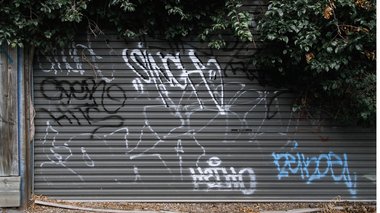
 Two Rooms presents a program of residencies and projects
Two Rooms presents a program of residencies and projects Advertising in this column
Advertising in this column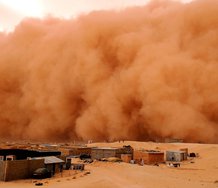
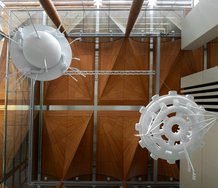
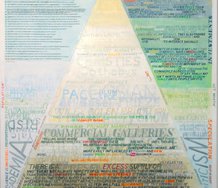
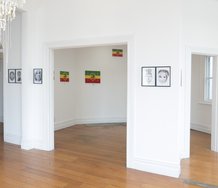
This Discussion has 0 comments.
Comment
Participate
Register to Participate.
Sign in
Sign in to an existing account.